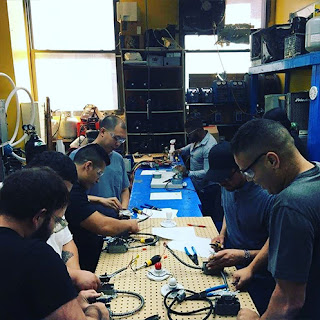How Are the Careers in HVAC and Refrigeration Different?
#1 Technicians in the field of heating, ventilating, and air conditioning are responsible for the central heating and cooling systems in commercial and residential buildings. Refrigerants are mainly used to provide cooler temperatures in homes and commercial freezer rooms. Essentially, the work domain can differ while the tools and material remain the same.
#2 The tools used in installing the HVAC and refrigeration system are common, and the basic tools are like a hammer, saws, and an array of screwdrivers, wrenches, etc. The difference comes in the specific equipment for controlling air temperature in large spaces. Thus, HVAC tools include gauge manifolds, manifold hoses, temperature gauges, air velocity measuring instruments, O2, CO2, CO indicators, and vacuum pumps. On the other hand, refrigeration tools include a thermometer, multimeter, leak detector, refrigerant recovery unit, refrigerant recovery tank, welding kit, valve core remover, etc.
#3 Finally, once you've graduated from an air conditioning & refrigeration engineering program, your working environments will likely look very different. HVAC technicians can find ample opportunities in commercial settings where they are in charge of installing complex air conditioning and ventilation system, starting with an intricate layout of ductwork and filters. Furthermore, they also run maintenance, repairs, and regular service checks on all these systems.
Alternatively, the refrigeration industry is built on more self-contained units that are designed to cool in a smaller space. Hence, there is lesser ductwork to begin with; however, it is replaced by the understanding of numerous tubes and coils that need to be kept running efficiently. Repairs and maintenance runs are also subjective to the size of the units.
To sum up, both HVAC and refrigeration technicians work in a closely-knit workspace that often overlaps and has some common attributes as well as distinctive ones.


Comments
Post a Comment